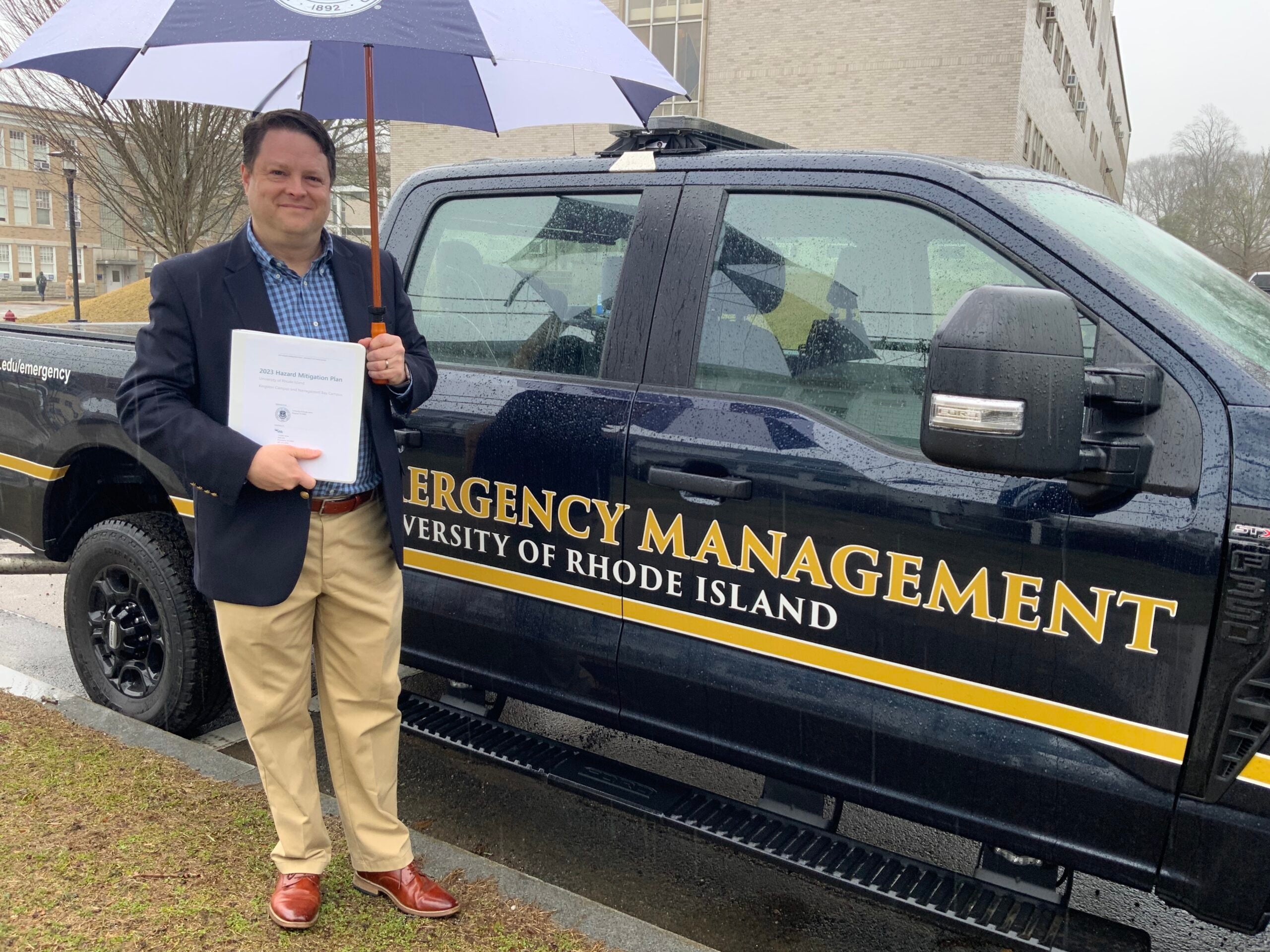KINGSTON, R.I. – March 5, 2024 –The University of Rhode Island now has a comprehensive plan to deal with natural disasters like floods, winter storms, hurricanes, extreme temperatures and other natural threats.
URI is the first higher education institution in the state to have a plan approved by the Federal Emergency Management Agency and the State of Rhode Island. A $35,000 grant from the Rhode Island Emergency Management Agency/FEMA funded the project and the hiring of Carissa Mills of VHB, a consulting firm consisting of engineers, scientists, planners and designers.
“The Rhode Island Emergency Management Agency takes great pride and satisfaction in celebrating URI as the leader, standing tall as the first higher educational institution in Rhode Island with a comprehensive hazard mitigation plan,” said Melinda Hopkins, planning chief at RIEMA. “In fostering resilience and preparedness, URI exemplifies a commitment to safeguarding its community, setting a commendable standard for educational institutions to follow.”
“The plan does two important things for the University,” said Sam Adams, URI’s director of emergency management. “It will enhance URI’s resilience when disasters strike, and it elevates our eligibility for hazard mitigation aid from the federal government. Many major colleges and universities have not completed such a plan. FEMA is very excited about our plan being completed because the agency can use it as a model for other higher education institutions across the country.”
To get a comprehensive view of the hazards facing URI and the actions needed to address them, Adams reached out across the campus to assemble the University Hazard Mitigation Committee. It was made up of representatives from Facilities Operations, the Department of Public Safety, the Office of Emergency Management, the Narragansett Bay Campus, Communications, Planning and Real Estate Development, Risk Management, Information Technology Services, and Housing and Residential Life.
“In setting up the committee, we wanted all of the key university stakeholders who would have among them knowledge of potential hazards and who could better and fully assess our vulnerabilities,” Adams said.
Throughout the process, the committee met regularly with Mills, who earned her Master of Arts in Marine Affairs degree at URI in 2005, to ensure that the plan focused on threats more likely to affect the University. For instance, the URI plan prioritizes threats from storms, including floods, damaging winds and storm surge, while placing threats from tornadoes and earthquakes at a lower priority.
“But the beauty of the plan is its ability to be adapted to any natural threat,” Adams said.
The 97-page plan provides guidelines for short-term and long-term actions, which will reduce the actual or potential loss of life or property from natural hazards. The four central goals of the plan are:
• Improve capabilities, coordination, and opportunities to plan and implement hazard mitigation projects, programs, and activities to protect public health and safety.
• Maintain continuity of operations during and after natural hazard events, including transition to an online, electronic, or other type of virtual environment when facilities are inaccessible.
• Improve education and outreach efforts regarding potential impacts of hazards, and identify specific measures that can be taken to reduce their impact.
• Pursue opportunities to protect new and existing campus facilities, assets, and infrastructure from identified hazards.
The mitigation plan process was a planning exercise itself, which included results from a campus survey, public hearings and discussions with officials in surrounding towns.
“We sent the document to the planning offices in South Kingstown and Narragansett, for their review and comment,” Adams said.
He said the team also used decision-making tools from the Rhode Island Coastal Hazards Analysis, Modeling and Prediction system (RI-CHAMP), developed by URI’s Department of Marine Affairs and Graduate School of Oceanography with funding from the U.S. Department of Homeland Security and its Coastal Resilience Center.
“I think we are putting ourselves ahead of the pack, especially as the changing climate makes storms and environmental hazards increasingly risky,” Adams said.

